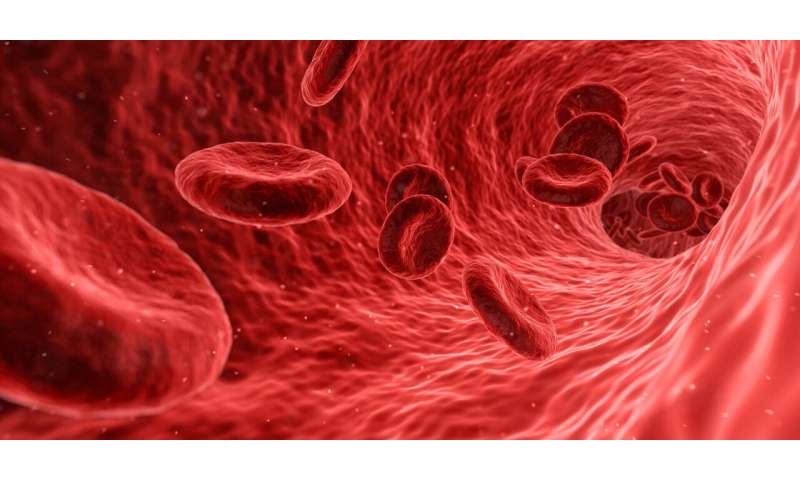
Consider for a moment that your life is dominated by spontaneous nosebleeds, chronic stomach hemorrhaging, persistent anemia and a complex constellation of other manifestations, some potentially life-threatening.
These symptoms characterize a rare genetic condition known as hereditary hemorrhagic telangiectasia, or HHT. The disorder disrupts the normal formation of blood vessels and is marked by yet another serious complication: the emergence of abnormal entanglements of blood vessels called arteriovenous malformations (AVMs). These vascular obstructions, like Gordian knots, block normal blood flow and deprive the body’s tissues of oxygen.
In New York, scientists at the Feinstein Institute for Medical Research have embarked on an ambitious study enabling them to examine the molecular mechanisms that drive HHT. They additionally found that two “off the shelf” medications can fully block or reverse some of the disorder’s most devastating complications. The discoveries involved strains of specially bred test mice.
Retinal AVMs, retinal bleeding and anemia were prevented in some groups of test animals; gastrointestinal bleeding was significantly reduced in others. The discovery of major symptom reversal or reduction lays the groundwork for human clinical trials, the medical investigators say.
“HHT is indeed a genetic disorder,” Dr. Philippe Marambaud, lead scientist of the HHT research told Medical Xpress. His institute, which is located in Manhasset on Long Island, has garnered an international reputation for tackling complex medical conditions and researching innovative treatments to address them.
Marambaud defines HHT’s primary features as vascular dysplasia, the abnormal development of cells in blood vessel walls, which are capable of impairing vascular function. Another characteristic of the disorder, hemorrhagic lesions, are common in a variety of organs and tissues, such as the liver, lungs and mucosa.
“The main manifestations of the disease are epistaxis—nosebleeds—internal bleedings, and anemia. It is an autosomal dominant genetic disease, meaning that inheritance of one of the mutated genes from the mother or father is sufficient to cause the disease.
An estimated 1.4 million people are affected by HHT worldwide, and about 85 percent of patients diagnosed with the condition “carry mutations in one of two genes: ALK1 or endoglin. Mutations are causing factors, not susceptibility factors,” Marambaud said.
He conducted the HHT investigation with colleagues, Drs. Santiago Ruiz and Fabien Campagne, both researchers at the Feinstein Institute.
In a scientific paper newly published in the Journal of Clinical Investigation, Marambaud and his team reported that two well-known drugs already given a green light by the U.S. Food and Drug Administration reversed or reduced disease-related pathology. The drugs acted on key signaling pathways to inhibit complications of the disorder, the scientists discovered.
“We found that a combination of two FDA-approved drugs correct the molecular defects and associated AVMs in HHT mouse models,” Marambaud said. “Previous work had proposed that the pathways, mTOR and VEGFR2, were abnormally over-activated in HHT models and HHT patients. We confirmed these observations and found treatments with a combination of two drugs that target mTOR and VEGFR2 significantly blocked the vascular pathology in HHT mice.
“These two drugs are sirolimus, an mTOR inhibitor and nintedanib, a VEGFR2 inhibitor. Our data suggest that repurposing of sirolimus plus nintedanib might provide therapeutic benefit in HHT patients,” Marambaud said.
Sirolimus, one of the drugs studied at the Feinstein Institute, is an old school medication, originally developed in 1972 as an antibiotic. It is also known as rapamycin and belongs to the class of drugs called macrolides. Scientists have long been aware of the impact that sirolimus has on vascular cells.
Coronary stents, which prop open clogged arteries, are coated with sirolimus. Release of the medication from the mesh-like devices inhibits the proliferation of smooth muscle cells, which can play a role in a vessel becoming reclogged. The coated implants are known as drug-eluting stents.
Sirolimus also has powerful immunosuppressant capabilities and is used in organ transplantation to prevent rejection. It does so by inhibiting T cell and B cell activation. Blocking these two major fighting forces of the immune system occurs because sirolimus reduces their sensitivity to interleukin-2 via mTOR inhibition. This signaling pathway—mTOR—is also important in HHT, Marambaud and his colleagues found.
Nintedanib, a receptor kinase inhibitor, is the other medication under study by Marambaud and his team. It is conventionally used in the treatment of idiopathic pulmonary fibrosis, a disease marked by stiffening and scarring of lung tissue, impairing the ability to breathe.
The synergistic impact between sirolimus and nintedanib, at least in animal models, suggests a possible role in human HHT.
Currently, doctors have treatments to control HHT’s myriad symptoms, but those interventions are not cures. In the United States, it is strongly recommended that patients seek care in “centers of excellence” where physicians specialize in the treatment of the rare hereditary disorder.
Source: Read Full Article
